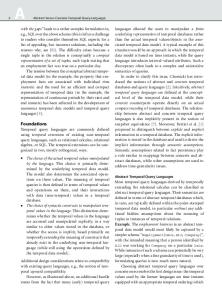Anomaly Detection Principles and Algorithms
This book provides a readable and elegant presentation of the principles of anomaly detection,providing an easy introduction for newcomers to the field. A large number of algorithms are succinctly described, along with a presentation of their st
- PDF / 4,285,839 Bytes
- 229 Pages / 439.42 x 683.15 pts Page_size
- 80 Downloads / 891 Views
Kishan G. Mehrotra Chilukuri K. Mohan HuaMing Huang
Anomaly Detection Principles and Algorithms
Terrorism, Security, and Computation Series Editor V.S. Subrahmanian
More information about this series at http://www.springer.com/series/11955
Kishan G. Mehrotra • Chilukuri K. Mohan HuaMing Huang
Anomaly Detection Principles and Algorithms
123
Kishan G. Mehrotra Department of Electrical Engineering and Computer Science Syracuse University Syracuse, NY, USA
Chilukuri K. Mohan Department of Electrical Engineering and Computer Science Syracuse University Syracuse, NY, USA
HuaMing Huang Department of Electrical Engineering and Computer Science Syracuse University Syracuse, NY, USA
ISSN 2197-8778 ISSN 2197-8786 (electronic) Terrorism, Security, and Computation ISBN 978-3-319-67524-4 ISBN 978-3-319-67526-8 (eBook) https://doi.org/10.1007/978-3-319-67526-8 Library of Congress Control Number: 2017954885 © Springer International Publishing AG 2017 This work is subject to copyright. All rights are reserved by the Publisher, whether the whole or part of the material is concerned, specifically the rights of translation, reprinting, reuse of illustrations, recitation, broadcasting, reproduction on microfilms or in any other physical way, and transmission or information storage and retrieval, electronic adaptation, computer software, or by similar or dissimilar methodology now known or hereafter developed. The use of general descriptive names, registered names, trademarks, service marks, etc. in this publication does not imply, even in the absence of a specific statement, that such names are exempt from the relevant protective laws and regulations and therefore free for general use. The publisher, the authors and the editors are safe to assume that the advice and information in this book are believed to be true and accurate at the date of publication. Neither the publisher nor the authors or the editors give a warranty, express or implied, with respect to the material contained herein or for any errors or omissions that may have been made. The publisher remains neutral with regard to jurisdictional claims in published maps and institutional affiliations. Printed on acid-free paper This Springer imprint is published by Springer Nature The registered company is Springer International Publishing AG The registered company address is: Gewerbestrasse 11, 6330 Cham, Switzerland
To Rama, Sudha, Lin, and Stephen
Preface
This book addresses the research area of anomaly detection algorithms, beginning with conceptual foundations, and then delving into algorithmic details, with examples drawn from several practical application areas. In one form or the other, researchers have been studying anomaly detection for over a hundred years, mostly with isolated results that are unknown to those who pursue other fields of enquiry. Many new advances have been made in the past decades, partly thanks to the rapid pace of advancements in pattern recognition and data mining, along with the availability of powerful computer hardware that fa
Data Loading...











